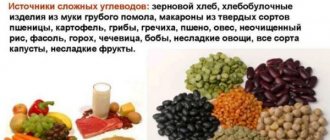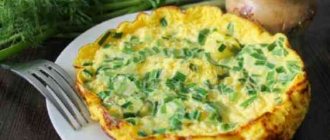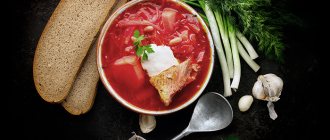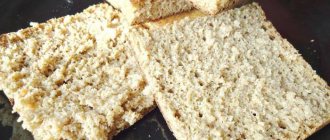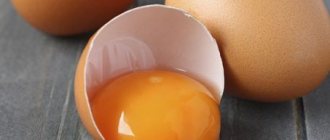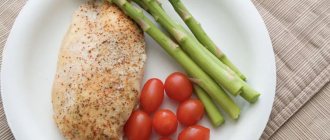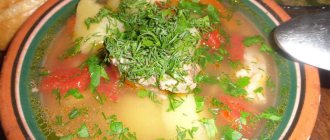Components and chemical composition of pilaf with pork
The dish prepared according to the classic recipe contains:
- rice;
- pork;
- carrot;
- onion;
- garlic;
- spices;
- vegetable oil.
Thanks to the large list of ingredients, pilaf contains most of the nutrients necessary for the body to function properly.
| Nutrient name | Percentage of the daily requirement for an adult. |
| Vitamin A | 2 % |
| Beta carotene | 2 % |
| Vitamin B1 | 7,5 % |
| Vitamin B2 | 1,8 % |
| Kholin | 3 % |
| Vitamin B5 | 2,9 % |
| Vitamin B6 | 5 % |
| Vitamin E | 6,7 % |
| Vitamin C | 1,3 % |
| Vitamin PP | 6,6 % |
| Potassium | 3,8 % |
| Calcium | 1,8 % |
| Magnesium | 2,6 % |
| Sodium | 20 % |
| Phosphorus | 5,5 % |
| Chlorine | 17 % |
| Iron | 3,2 % |
| Cobalt | 9,2 % |
The finished dish also contains vitamins B9 and K, and microelements (iodine, manganese, copper, molybdenum, selenium, fluorine, chromium, zinc).
The most dietary pilaf
It all depends primarily on what “filling” you choose for your dish. If you are leaning towards the meat option, the least nutritious and dietary option will be chicken. Yes, even if you resort to modern kitchen appliances. So, chicken in this dish, prepared traditionally, will give the dish about 170 kcal, if you get a lean bird or take chicken. A pilaf prepared from the same chicken in a slow cooker will have no more than 140 calories. The beef variety will lose about 50 kcal out of 215, and the pork variety will lose the same amount. A minimum of 165 kcal will remain, but if you compare them with 220 or 280, those losing weight will immediately have to run to the store for a multicooker.
And if you choose pilaf without meat, and even low-calorie, then you should stop at the nettle-apple variation. It will bring you only 86 kcal - compared to all other recipes, this is a record. The second place is occupied by dried apples, “diluted” with carrots - they reach 126. A proud third place goes to bell peppers with its 165 kcal. Other vegetables are inferior in energy content even to chicken, so from a dietary point of view they are unlikely to contribute to weight loss.
As you can see, pilaf varies in taste and composition. Choose what suits you and do not deny yourself the pleasure of this dish, even if you are on a diet.
Pilaf is a nutritious dish with a high calorie content. It is not recommended for use by those who are watching their figure. For example, the calorie content of a dish with beef is 218 kilocalories, with pork - 204 kilocalories. You can reduce the nutritional value of pilaf if you cook it with vegetables, but without using meat. In this case, its calorie content will be about 70 kilocalories. The nutritional value of pilaf with beans is 84 kilocalories, with tomatoes and bell peppers - 95 kilocalories. It is allowed to prepare a dish with seafood, for example, the calorie content with shrimp is 102 kilocalories.
IT IS IMPORTANT TO KNOW! Fortune teller Baba Nina:
“There will always be plenty of money if you put it under your pillow...” Read more >>
The benefits and harms of the dish
Pilaf with pork, despite its high calorie content, has a positive effect on the body. After eating the dish, a person retains a feeling of fullness and vigor for a long time. This effect is achieved due to the presence of proteins, as well as animal and vegetable fats.
Due to the high content of various vitamins, the product in question can improve the functioning of the body’s immune system, normalize the functioning of the cardiovascular system and visual organs. Since rice is a natural sorbent, the eaten dish allows you to remove waste and toxins from the body.
The presence of dietary fiber helps lower cholesterol levels, which makes consuming animal fats safer. The vegetables included in pilaf can improve the condition of the skin, hair and nail plates, and reduce the body’s susceptibility to viral diseases.
When consumed in moderation, the dish in question does not have a negative effect on the body, but it is not recommended to be included in the diet of obese individuals. Also, you should not include pilaf with pork in the diet of children of primary preschool age.
Rice and seasonings for pilaf
As you know, pilaf is high in calories due to the meat it contains. But pilaf also contains rice and spices, which are also high in calories. Pilaf is popular among many peoples, especially in Central Asia, where it has been revered for many centuries.
Many people are interested not only in the question - how many calories are in pilaf, but also in the question - which rice is best suited for preparing it?
The modern food industry today offers several varieties of rice. It comes in long grain, round, sanded and unpolished, as well as brown and white.
To find out which rice is best suited for pilaf, you should pay attention to the different characteristics of the grain.
For example, round rice is overcooked, it is sticky and often sticks together. This rice is good for soups and liquid porridges.
Long grain rice is a bit dry, but when cooked, the rice grains do not lose their shape, and the dish turns out crumbly. It is great for preparing pilaf and as a side dish for salads and meat dishes.
Today there are many ways to prepare pilaf, each nationality brings its own ingredients and characteristics to it. Adding new components leads to the creation of new pilaf flavors. And today it is impossible to say with confidence which of the recipes is the most correct, and which rice is best suited for pilaf.
As for the seasonings that add calories to pilaf, you can buy them ready-made in a store or market - there the spices are specially selected to create a balanced mixture based on oriental recipes. For example, the seasoning for pilaf includes dried barberry, turmeric, cumin and red pepper.
In addition, the seasoning for pilaf may contain saffron, savory, coriander, sweet paprika, and chili pepper. Also, in the process of making pilaf, aromatic herbs, cilantro and parsley can be added to it.
Each ingredient in the pilaf seasoning is responsible for certain properties and qualities that are transferred to the finished dish. For example, saffron or turmeric not only gives pilaf more calories, but also a yellow-orange color. Barberry gives the pilaf a sour taste, and cumin gives it an oriental aroma.
Using ready-made seasoning for pilaf is a personal matter for each cook. The most important thing is that the end result is excellent pilaf in the oriental style, the mere sight of which will whet your appetite and lift your spirits.
Contents of the BZHU
The table shows the average values of proteins, fats and carbohydrates per 100 g of finished dish:
| Name | Quantity |
| Squirrels | 8.81 g |
| Fats | 9.3 g |
| Carbohydrates | 21.47 g |
Pilaf with pork.
Calorie content and nutritional value of the dish. Depending on the ingredients used, the indicators may change up or down.
Recipes for dietary and low-calorie dishes
Despite the fact that pilaf contains a large number of calories, there are dietary recipes that will help you prepare a tasty, but at the same time low-calorie dish.
If you use vegetables or lean meat, it will not harm your figure. Using a multicooker will help you avoid consuming large amounts of sunflower oil.
Chicken pilaf in a slow cooker
The calorie content of this dish is 94 kilocalories.
To prepare dietary chicken pilaf you will need:
- 530 g chicken fillet;
- 320 g brown rice;
- 190 g onions;
- 240 g carrots;
- 23 g garlic;
- 650 ml water;
- 10 g barberry;
- Salt, ground black pepper, turmeric, cumin - to taste.
Cooking method:
- 1. The meat is chopped into medium-sized pieces.
- 2. Finely chop onions and carrots.
- 3. Place everything in a 4.5 liter multicooker bowl.
- 4. Set the “Frying” or “Cooking” mode for 5 minutes.
- 5. After this, seasonings are added and all ingredients are mixed.
- 6. Place washed rice.
- 7. All ingredients are filled with water.
- 8. Garlic is laid out on top in the form of plates.
- 9. The “Pilaf” mode is set for 40 minutes.
Low calorie meal without meat
The nutritional value of this dish is 63 kilocalories.
To prepare low-calorie pilaf without meat you will need:
- 400 g rice;
- 2 liters of water;
- 1 carrot;
- 1 onion;
- 3 cloves of garlic;
- 20 g vegetable oil;
- 5 g salt.
Cooking method:
- 1. Finely chop the onion.
- 2. Grate the carrots.
- 3. Onions and carrots are fried in a deep frying pan in vegetable oil.
- 4. Rice is added and then lightly fried.
- 5. Everything is filled with water, garlic cloves are added, and the ingredients are salted.
- 6. The dish is stewed under the lid until cooked.
Additional ingredients and their effect on the energy value of the dish
In addition to rice and meat, garlic, onions and carrots are added to the pilaf.
These products themselves have low energy value. Their quantity can both reduce and increase the number of kilocalories per 100 g of product.
Pilaf preparation technology
There are a huge number of different recipes using which you can prepare pilaf. It is prepared with meat, fish, vegetables and mushrooms, sweet and dried fruits, various cereals, and certain combinations of spices and herbs. However, regardless of the ingredients, certain rules must be followed, thanks to which the dish can truly be called pilaf.
The technology for preparing pilaf is a certain procedure and method of processing ingredients. By following certain recommendations, even at home you can prepare real pilaf, a traditional dish of Asian cuisine, from the simplest set of ingredients.
Product processing is a general technology that is followed for all options for preparing pilaf. The products are subjected to cold and heat processing, due to which the ingredients not only fully reveal their unique taste, but also allow them to preserve the maximum amount of useful and nutritional properties.
The calorie content of the finished dish also depends on the correct processing, which can be controlled at the preparation stage.
Cold processing
Cold processing includes food preparation: sorting, washing, cleaning and slicing. The quality, nutritional value and taste of the finished dish largely depend on how the ingredients are prepared.
· Sorting. Before preparing pilaf, it is very important to choose the right ingredients. Rice or other cereals are carefully sorted and sifted through a strainer. Carrots and onions should be strong, without signs of spoilage. The meat is cleaned of veins and bone fragments, after which it is stripped of glands that are found in fat and muscle tissue.
· Washing and cleaning. At this stage, all products are peeled, the carrots are washed in running water, there is no need to wash the onion. Fresh meat does not need to be washed, but if dried, salted or smoked meat is used, rinse it lightly in warm water. For better taste, the meat is marinated with spices and herbs, mixed with chopped garlic and chopped onions.
Rice requires careful washing - traditionally it is washed in five waters, but in some cases additional washing may be required. The cereal should be well cleaned of dust and starch powder. The rice should become clean, the grains should be transparent, slightly pearlescent - this will ensure the flowability of the finished dish.
· Slicing. Main components: onions and carrots are cut into slices approximately 2-3 millimeters thick; if the pilaf is prepared without meat, vegetables can be cut a little thicker. The traditional way of cutting onions is into rings, carrots into strips. The meat is cut into medium-sized pieces, weighing no more than 15 g; for preparing a large portion, larger cuts are allowed (150-200 g each).
Heat treatment
Heat treatment includes: reheating oil or fat, preparing zirvak and adding cereal.
Heating the oil to 180°C gives the finished pilaf a special taste. It is in calcined oil that vegetables and meat should be fried. However, it is very important to know that cooking in hot oil is undesirable, as the food loses most of its nutritional properties.
Zirvak is the basis of any pilaf; it represents a special gravy in which the rice will be further cooked.
Preparing zirvak involves uniformly frying onions, meat and carrots in hot oil, after which the products are stewed together with herbs and spices. The order of frying the products largely depends on the type of pilaf: in some cases, the onions are fried first, in other cases, the meat is fried first and only then the vegetables are added.
The washed rice is placed in a boiling zirvak. It is very important to remember that stirring the dish after this stage is not permissible, otherwise the cereal will be sticky and viscous.
How to reduce the calorie content of pilaf?
To reduce the calorie content of pilaf with pork:
- It is necessary to choose the right meat products. It is advisable to use fillet parts without lard. When using a neck piece, it is recommended to trim off the fat. Thus, the energy value of the dish can be reduced to 250 kcal per 100 g of product.
- You should choose fats with lower calorie content. It is recommended to avoid adding animal fats and replace vegetable oil with olive oil. In addition to changing the type of product, it is necessary to reduce its quantity to obtain maximum results.
- It is recommended to select a suitable cooking method. When preparing pilaf in a slow cooker or steamed, the use of fat can be practically eliminated, which allows reducing the energy value of the dish by an average of 50 kcal.
- It is necessary to change the proportions of the main components and vegetables. By reducing the amount of pork and adding more vegetables, you can significantly reduce the number of calories in the dish. To ensure that the taste of the pilaf does not suffer from a lack of protein components, you can include porcini mushrooms, which have a low calorie content, in the recipe.
- You can replace white rice with brown rice. With such a substitution of products, you can reduce the number of kilocalories by 1/5.
By following the suggested recommendations, you can prepare a dietary dish, even using pork in the composition.
Cooking features
The calorie content of pilaf can be easily reduced using dietary recipes. Cooking in a slow cooker will help you avoid frying foods in oil, and vegetables or lean meats will not add extra pounds.
If you have diabetes, it is not recommended to use white rice for cooking. Overweight people should not use lamb, pork; it is better to prepare dietary recipes with fish, chicken, turkey or vegetables.
The dish can be made exotic, but at the same time no less tasty and healthy: add fish, shrimp, squid, mussels to it. Seafood will saturate the body with protein and iodine. Those who have given up food of animal origin may well enjoy rice with vegetable additives.
For gourmets - beef
One of the varieties that is also recognized by Muslim “inventors” is pilaf with beef. If a pig is a dirty animal, then they do not protest against cows. There is even a special recipe called “Uzbek beef pilaf.” There are some peculiarities in cooking, but they are too significant. And at the same time, the calorie content of pilaf with beef is noticeably lower.
The main differences: the meat must be carefully cleaned of veins and films - that’s it. Second: after frying the zirvak, it needs to be stewed. Stewing will take from an hour (if you got veal) to two (if you found only the meat of an adult cow). And third: when everything is ready, the fire is extinguished, but the contents of the cauldron under the lid should be infused for at least half an hour. All these measures are aimed at removing the toughness of the meat. But the calorie content of pilaf with beef will be only 215 kcal, and if you take very lean pieces, it will drop to 200. For those concerned about their figure, this is a significant difference. If we compare the beef version and the calorie content of pilaf with pork, the numbers in the first case are very encouraging.
The most delicious option
And even though the calorie content of pilaf with pork is maximum, for us it remains the most attractive. The main thing when preparing it is to follow all the rules so that, despite its satiety, it is easily digestible and gives taste pleasure. Not making a mistake in spices is the first key to success. So don't forget cumin, paprika, turmeric, and be sure to find doorweed. The second component that will help you avoid failure is a well-made zirvak, that is, meat, overcooked with vegetables, cooked before adding rice. The main condition here is to cook it over high heat. The third rule is not to stir the rice so that the result is pilaf, and not porridge with meat.
There are a million recipes for this dish. But if you do everything listed above, they will turn out to be the right dish. And if you are only interested in the calorie content of pilaf with pork, then take care of selecting a part of the carcass. The average calorie content of pilaf with this meat is 285 kcal. If you take a fatty neck or add lard (lard), it will reach 300. And if you choose a relatively lean piece, and even if you cut off the fat layers, you will get pork pilaf, the calorie content of which will drop to 240-250 kcal.
Nourishing but healthy
Pilaf is definitely not a dietary dish. Its nutritional value is so great that pilaf is enough for a full lunch. However, it cannot be called a harmful food, since all the ingredients contain elements necessary for a person. The main component - rice - is a carrier of a large number of vitamins, microelements and minerals (among which the most valuable are iodine, potassium, iron and calcium), starch and fiber.
The importance of carrots and onions goes without saying. The orange vegetable is even used to prevent cancer, strengthen vision and immunity, and lower blood pressure.
Meat and fat increase the calorie content of pilaf the most. With pork it will be higher, with other types of meat it will be slightly lower, but this dish is still not suitable for those on a diet. At the same time, meat remains necessary: it supplies a person with the necessary proteins, mineral salts and some vitamins.
With all its increased nutritional value, pilaf is very easily digestible, so even those who do not have very advanced digestive problems can eat it.
Pork pilaf in a slow cooker
We offer you the easiest way to cook pilaf in a slow cooker. Its taste is not at all different from pilaf prepared in the classical way. And it also requires very little oil, better retains its beneficial properties and excellent taste, and you can feed your family and treat your friends with it.
Cooking time – 2 hours.
Ingredients
Cooking process
Your “stove” has indicated that the dish is ready. You can serve it on the table and invite everyone to the meal.
Dietary options for a popular Asian dish
The calorie content of pilaf with chicken is of the greatest interest to lovers of a slim figure, because chicken is a dietary product and, accordingly, should contain calories in small quantities.
First of all, you should definitely take into account that the calorie content of a dish varies depending on the presence of various ingredients in it, as well as their quantity.
The calorie content of chicken pilaf may vary depending on the part of the carcass that was used in preparing the dish. The lowest value will be for a dish according to an oriental recipe with chicken fillet - 150 kcal per 100 g, and the same dish with chicken legs - about 190 kcal.
But chicken contains a very large amount of protein, which is vital for our body.
In fact, pilaf with mushrooms is not very correct in terms of traditions, but there is no fundamental difference in preparation, but such a composition has a great influence on calorie content.
Mushrooms have a rather modest energy value compared to any type of meat; they contain virtually no fat, but there is enough protein. In terms of its effect on the condition of the figure, this dish is minimal, since its calorie content of pilaf with mushrooms is the lowest - about 90-100 kcal.
And a little about secrets...
The story of one of our readers, Inga Eremina:
I was especially depressed by my weight; at 41, I weighed as much as 3 sumo wrestlers combined, namely 92 kg. How to completely lose excess weight? How to cope with hormonal changes and obesity? But nothing disfigures or makes a person look younger than his figure.
But what can you do to lose weight? Laser liposuction surgery? I found out - no less than 5 thousand dollars. Hardware procedures - LPG massage, cavitation, RF lifting, myostimulation? A little more affordable - the course costs from 80 thousand rubles with a nutritionist consultant. You can, of course, try to run on a treadmill until you go crazy.
And when will you find time for all this? And it's still very expensive. Especially now. Therefore, I chose a different method for myself...
When calculating the calorie content of pilaf per 100 grams of product, many factors are taken into account: what meat it is made from, the nutritional value of the dressing and the type of grain. In the article you will find all the popular varieties of the dish.
Pilaf is a popular national dish of residents of Asian countries, which has long been loved and prepared far beyond the borders of Asia. It is considered not only one of the most delicious, but also quite satisfying. To answer the question of how many calories are in pilaf, you must first determine the composition of the products included in a particular recipe.
